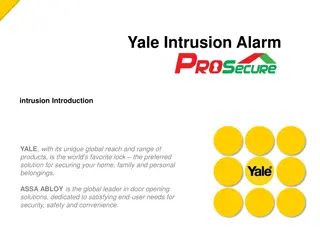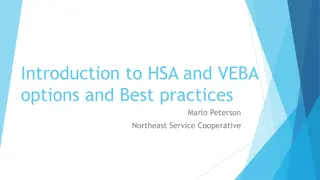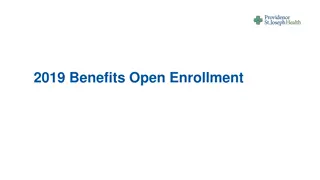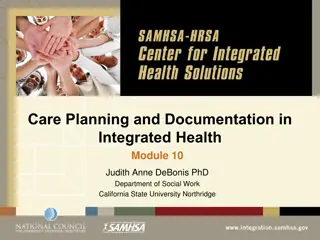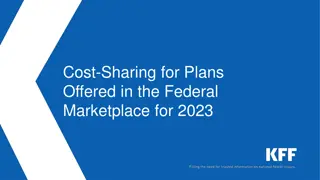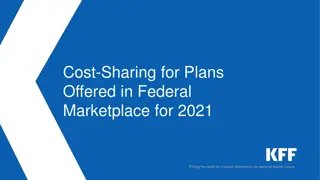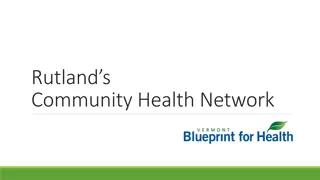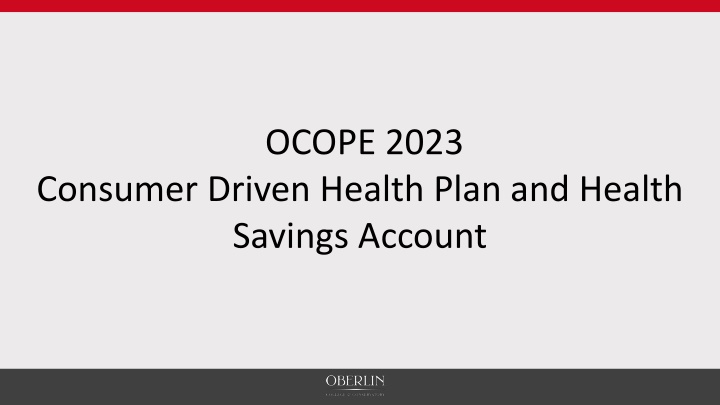
CDHP and HSA Plans
CDHPs are Consumer-Directed Health Plans that adhere to IRS regulations, offering lower premiums and out-of-pocket costs but higher deductibles. Health Savings Accounts (HSAs) are tax-advantaged accounts to cover medical expenses. Learn about the features, benefits, and differences between CDHPs and HSAs.
Download Presentation

Please find below an Image/Link to download the presentation.
The content on the website is provided AS IS for your information and personal use only. It may not be sold, licensed, or shared on other websites without obtaining consent from the author. If you encounter any issues during the download, it is possible that the publisher has removed the file from their server.
You are allowed to download the files provided on this website for personal or commercial use, subject to the condition that they are used lawfully. All files are the property of their respective owners.
The content on the website is provided AS IS for your information and personal use only. It may not be sold, licensed, or shared on other websites without obtaining consent from the author.
E N D
Presentation Transcript
OCOPE 2023 Consumer Driven Health Plan and Health Savings Account
What is a CDHP? A CDHP is a Consumer Directed Health Plan that must follow rules established by the IRS. The IRS sets minimum deductibles, out of pocket maximums, and certain plan design requirements. Rates for 2023 are: Single coverage 1.75% of wages Employee + spouse / same-gender partner / child (ren): 3.5% of wages Family coverage: 4.5% of wages Network of providers is the same as the Traditional PPO Under the CDHP, the premium is less than the traditional PPO plan. Under the CDHP, the out of pocket max amount is less than the traditional PPO plan. The deductible is higher under the CDHP and plan benefits begin when the deductible is met. The Health Savings Account helps to offset the deductible by Oberlin funding 75% of the deductible in 2023. Most brand and generic maintenance / preventative drugs are covered at 100% under the CDHP; that is, without cost to the member. Also, 3rd Party prescription services such as GoodRx can be used for prescriptions and the cost will be applied toward your deductible. Save your receipts, a copy of the discount card used, and complete a CVS Prescription Reimbursement Claim Form, found at cvshealth.com
What is an HSA? An HSA is a Tax-Advantaged Savings Account owned by you that can be used to pay for qualified medical expenses for the account owner and dependents. In order for you or Oberlin to contribute to an HSA you must also be enrolled in an HSA-qualified consumer directed health plan (CDHP-HSA).
HSAs vs. FSAs Health Care Flexible Spending Account (HC-FSA) Dependent Care Flexible Spending Account (DC-FSA) Health Savings Account (HSA) You cannot be enrolled in the CDHP-HSA plan. No restrictions dependent upon the medical plan. Eligibility Must be enrolled in the CDH-HSA Qualified Expenses Medical, Dental, Vision Medical, Dental, Vision Eligible Dependent Care Services 2023 Employer annual contribution $1,500 Single $2,250 Employee/Spouse or Child(ren) $3,000 Family None None Rollover Unused balance rolls over year to year None None Changes to contributions Only during annual open enrollment Only during annual open enrollment Any time
Medical Plan CDHP-HSA In-Network Non-Network Deductible Single Employee + Spouse or Child(ren) Family $2,000 $3,000 $4,000 $4,000 $6,000 $8,000 Coinsurance after Deductible 80% 60% Out-of-Pocket Maximum (includes deductible and coinsurance) Single Employee + Spouse or Child(ren) Family $4,000 $6,000 $8,000 $8,000 $12,000 $16,000 Preventive Care Covered 100%, No Deductible 60% Office Visits, Inpatient, Outpatient 80% after deductible 60% after deductible Prescription Drugs (Deductible and Out-of- Pocket maximum is combined with medical) 80% after deductible 60% after deductible The summary is intended to be a brief outline of coverage. The entire provision of benefits and exclusions are contacted in the Group Contract, Certificate and Schedule of Benefits. *Out of network claims could result in higher out-of-pocket cost for single. **All family members combined must meet the family deductible before the out-of-pocket maximum is met.
Funding the HSA OBERLIN CONTRIBUTES* 2023 IRS ANNUAL LIMIT CATCH-UP CONTRIBUTION YOU CAN CONTRIBUTE* COVERAGE TIERS Single $1,000 + $500 $2,350 $3,850 Contribute an additional $1,000 if you are age 55 or older in 2022 EE + SP/DP - OR - EE + Child (ren) $1,500 + $750 $5,500 $7,750 Family $2,000 + $1,000 $4,750 $7,750 The amount you elect to contribute will be made on a per monthly pay basis. Employer HSA Funds are funded in January for the year. New employees will have their contributions pro-rated based on the quarter in which they were hired. *For 2023, Oberlin will make an additional contribution of either $500 / $750 / $1,000 based on coverage for OCOPE members only.
HSA Funds Can Be Used To Pay For Office visits, lab work, inpatient and outpatient services Medical Expenses X-rays, imaging, physical, occupational, and speech therapy Hearing aids, long term care, and more Prescription Drug Expenses in network as well as Good Rx Vision Expenses Dental Expenses **Remember, your family is defined as your tax dependents and your legal spouse IRS Code: Section 213 (B)
HSA Account Highlights B A Medical Mutual will open your HSA account. Receive debit card and welcome kit. C D Save all receipts Monitor your HSA account online at: My Health Plan Do not make payment at time of medical care visit. Make payment at time of pharmacy visit.
Other resources: The HR website has a number of documents and videos that help explain the CDHP in more detail. Visit: https://www.oberlin.edu/human-resources/health- benefits/cdhp







